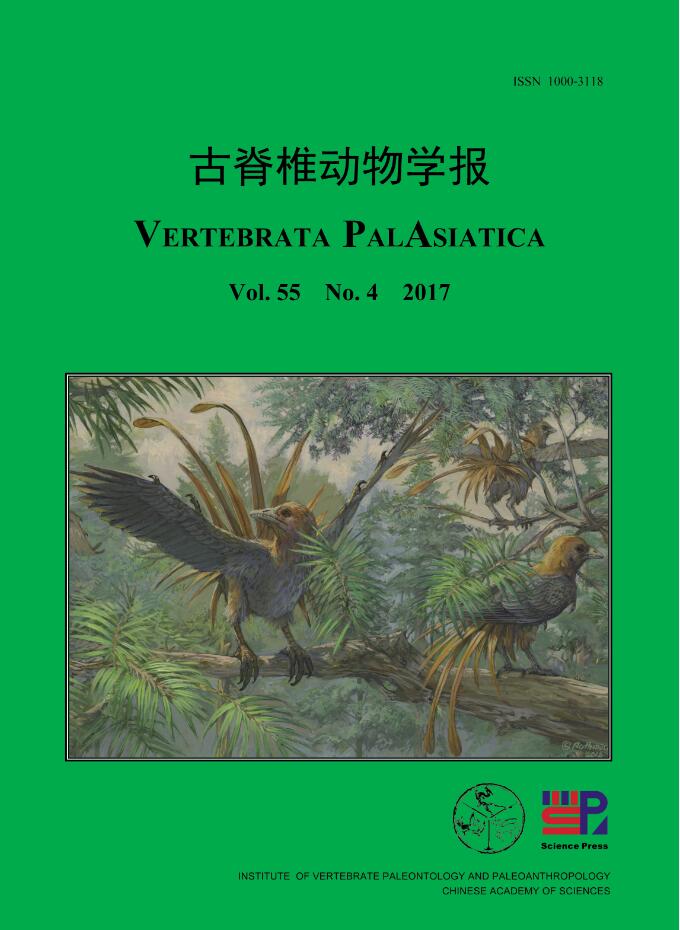

封面说明:现代鸟类的尾综骨通常为短小的犁铧状,上面长有扇状的尾羽,多用于辅助飞行。但早期古鸟类大多具有宽大而粗壮的尾综骨,形似三棱刀,附着有成对的带状尾羽,这样的组合与雉科鸟类的尾部结构十分类似,可能会产生类似“开屏”的行为。复原图表现的便是三只雄性的天堂飞天鸟(反鸟类)在榧树林中展示尾羽,吸引雌鸟的场景。推测鸟类尾羽最初也许主要是作为装饰物,而后才逐渐演化出了空气动力学功能。详见本期王维、邹晶梅文(p. 289)。(绘图:迈克尔·罗斯曼)
Cover image: Pygostyle of modern bird seems like a ploughshare with fan-shaped tail feathers for assisting flight. However, early birds developed more robust pygostyles like the three-square tool with paired band-like feathers, resembling the caudal complex in modern pheasants and suggesting the display behavior. The reconstruction shows three male Feitianius paradise (Enantiornithes) displaying for females in a torreya forest. Thus, in birds, tail feathers may originally be ornamentations then evolve aerodynamic functions afterward. See details in the paper of Wang and O’Connor (p. 289). (Illustrated by Michael Rothman)